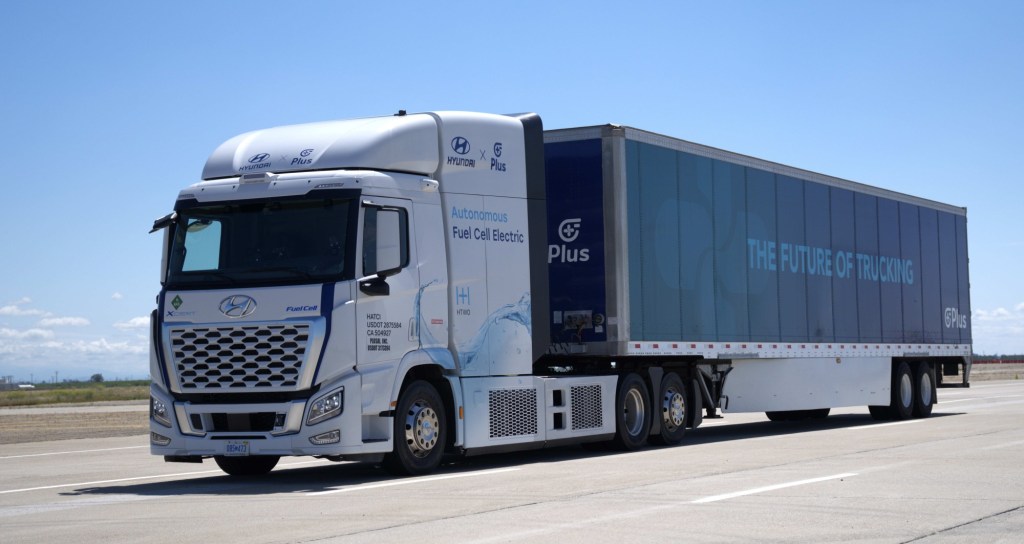
California once led the nation in autonomous vehicle (AV) innovation. It was among the first states to test and deploy robotaxis, unlocking a new transportation option that’s safer, greener, and more accessible. In a state with some of the deadliest roads in the country, California was wise to embrace AVs, which, in study after study, consistently outperform human drivers on safety.
But when it comes to autonomous trucking, California policymakers have repeatedly pumped the brakes. Meanwhile, other states are racing ahead, welcoming AV trucking as a solution to labor shortages, roadway accidents, and supply chain woes.
Not once but twice, California lawmakers have passed legislation that would effectively ban AV truck testing in the state. And even though Governor Gavin Newsom – an early champion of AVs – thankfully vetoed both bills, California is still in the slow lane while we wait for the DMV to formally begin its rulemaking.
I’m baffled by my home state’s reluctance to greenlight AV trucking, especially given California’s dependence on long-haul freight. We’re home to the two busiest portsin the country, and $2.8 trillion worth of goods are shipped on California highways each year.
With a persistent truck driver shortage nationwide, marked by a staggering 50 percent gap and a 90 percent annual turnover, California’s supply chains are feeling the squeeze.
The trucker shortage means that goods are taking longer to leave ports, creating backlogs in California’s supply chain. Fewer drivers mean higher transportation costs and slower shipments, which translates to higher consumer prices. Those price hikes hit low-income families the hardest, with the cost of some everyday groceries increasing by as much as 50 percent.
If regulators at the DMV and Department of Transit continue to stall despite these mounting concerns, they’ll be ensuring that the future of autonomous freight happens elsewhere. And that means missing out on the job opportunities, safety benefits, and efficiency solutions that AV trucking would bring.
One major roadblock is the vocal opposition of the Teamsters Union, which has raised concerns of AVs replacing the jobs of its members. But policymakers should remember that the majority of Teamsters members aren’t long-haul truckers; they’re last-mile delivery drivers, a job category that autonomous trucks are nowhere close to replacing. Today’s most advanced AV trucks are built specifically for long-haul highway routes – the exact routes that many human drivers don’t want due to the grueling hours and time away from home.
If policymakers want to align with the interests of union workers, they should consider a striking fact: 75 percent of union members support AV testing – a higher percentage than the general public.
Instead of displacing drivers, AV trucking would complement the industry. Researchers have found that autonomous trucks would increase the number of U.S. jobs by as many as 35,000. AV trucks can help fill the 50 percent long-haul trucker gap while allowing human drivers to take on the safer, more desirable short-haul and delivery jobs that are growing in demand.
It’s easy to understand the safety advantages that AV trucks have over human drivers. Autonomous trucks don’t drive distracted and they’re never fatigued from long shifts. Compare that with human truckers. According to the Insurance Institute for Highway Safety, driver-related issues were identified as contributing factors in 87 percent of all big rig crashes. AV technology is designed to eliminate human error, making highways safer for everyone on the road.
There’s also an environmental benefit. While trucks represent only 6 percent of vehicles on the road, they produce over 35 percent of transportation-generated nitrous oxide and 25 percent of on-road greenhouse gas emissions. Since AVs can be programmed to take the most efficient routes and follow speed limits precisely, they’ll end up using energy more efficiently. This kind of technology could play a huge role in helping California reach its goal of slashing greenhouse gas emissions.
Two dozen other states have recognized the benefits and are charging ahead, including neighboring states like Nevada and Arizona. By stalling on deployment, California risks cutting itself off from emerging trade routes. As a result, Californians would lose out on more stable supply chains and cheaper, faster access to essential goods.
With mounting supply chain challenges and a persistent trucker shortage, embracing AV trucks isn’t just a technological upgrade, it’s a necessity. It’s time for California to reclaim its leadership, prioritize facts over fear, and move forward with AV trucking to build a more resilient future.
Adam Kovacevich is founder and CEO of the center-left tech industry coalition Chamber of Progress. Adam has worked at the intersection of tech and politics for 20 years, leading public policy at Google and Lime and serving as a Democratic Hill aide.
Originally Published:



